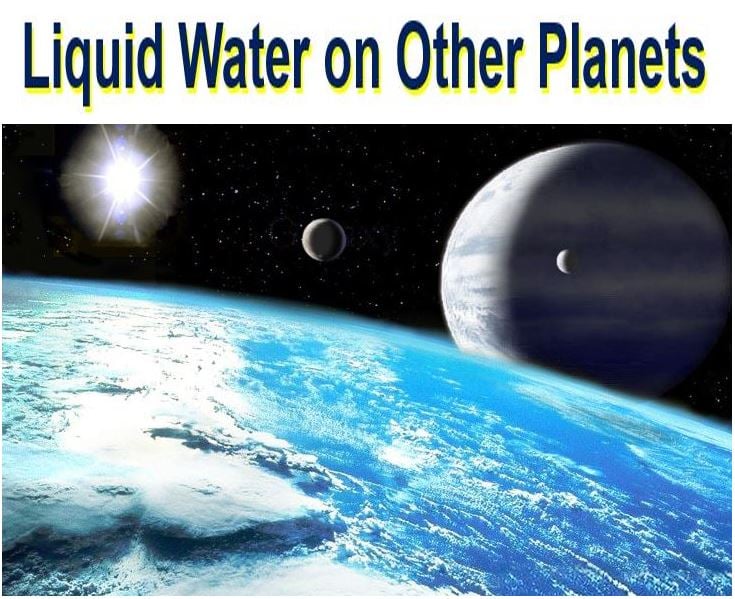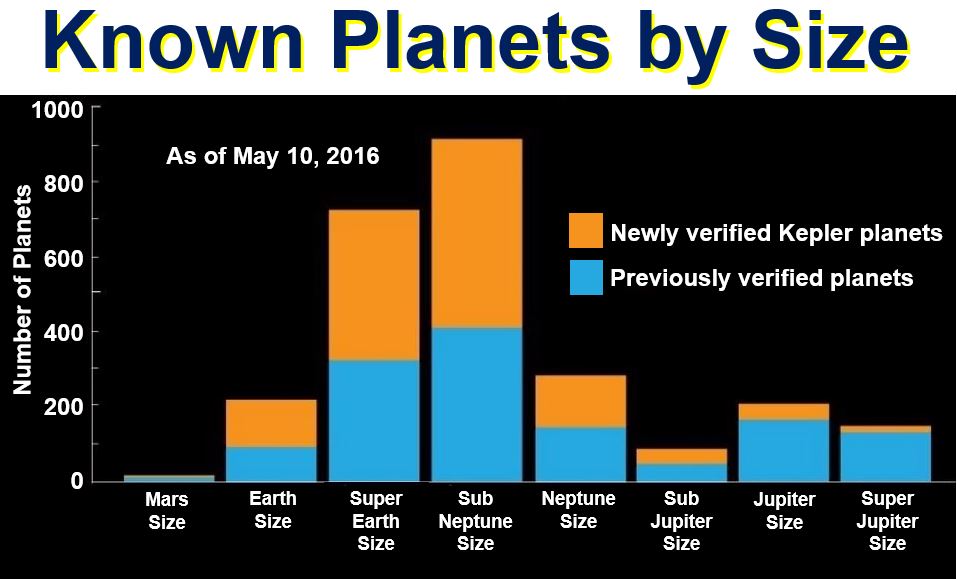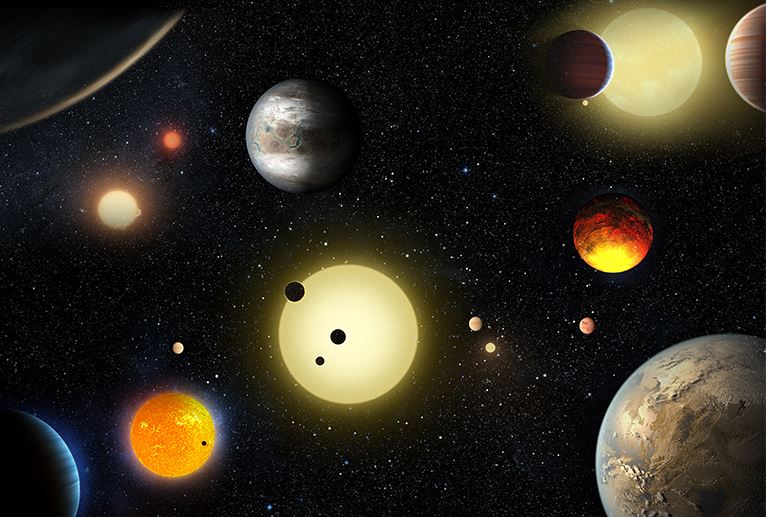The possibility of life on other planets in other star systems is less likely than scientists had thought – a new study found that the greenhouse effect in most of the ones with a thick atmosphere would make them far too hot for liquid water to exist, say researchers from Imperial College London and Princeton University in New Jersey.
However, don’t despair. There are billions of exoplanets in our galaxy, and even if just a very small proportion might have conditions for liquid water to exist – and thus the possibility of life – it is still a lot of planets.
The greenhouse effect is the natural process by which certain gases – greenhouse gases – trap some of the planet’s parent star’s energy, warming the planet up. In Earth’s case, the greenhouse effect warmed up the planet enough to support life.
 The larger planets (Earth-sized or bigger) close to M dwarf stars probably still have their thick atmospheres and will be too hot for liquid water to exist. We need to look for planets smaller than Earth – the size of Venus or Mars – which are more likely to have atmospheres with the right temperature for life. (Image: Adapted from aasnova.org)
The larger planets (Earth-sized or bigger) close to M dwarf stars probably still have their thick atmospheres and will be too hot for liquid water to exist. We need to look for planets smaller than Earth – the size of Venus or Mars – which are more likely to have atmospheres with the right temperature for life. (Image: Adapted from aasnova.org)
Without the greenhouse gases life on our planet would not exist. However, even though the greenhouse effect can bring life, if the atmosphere is not just right, the planet can be too hot.
James E. Owen, from Princeton’s Institute for Advanced Study, and Subhanjoy Mohanty, from the Astrophysics Group at Imperial, wrote in the scientific journal Monthly Notices of the Royal Astronomical Society that their new research revealed that far fewer planets may be capable of harbouring life as we know it than predicted, because their atmosphere makes them too hot.
Finding planets in the ‘habitable zone’
When seeking out planets that might harbour life, astronomers look for those in the ‘habitable zone’ or ‘Goldilocks zone’ (because conditions are ‘just right’) around their stars. The habitable zone is an area at the right distance from the parent star that allows water in liquid form to exist. Earth is in this Solar System’s habitable zone.
Traditionally, this search for planets that might have life-forms has concentrated on planets orbiting stars like our Sun, in a similar way to our planet.
 For another planet to have life as we know it, it must have liquid water. (Image: Wikipedia)
For another planet to have life as we know it, it must have liquid water. (Image: Wikipedia)
However, recently the search has also included small planets orbiting very close to red dwarfs (M dwarfs), which are considerably smaller and dimmer than our Sun.
About seventy-five percent of all the stars in the Milky Way (our galaxy) are M dwarfs. Recent discoveries have suggested that many M dwarfs host planets, which boosted the number of potentially habitable planets – just in our galaxy – into the billions.
Both the TRAPPIST and Kepler planet-seeking telescopes announced earlier this month the discovery of many near-Earth-sized planets orbiting M dwarf stars. Many of them are within the Goldilocks zone.
This latest study found that although they orbit dimmer and smaller stars, a significant percentage of these planets are likely to be too hot to be habitable.
Only smaller planets orbiting M dwarfs likely to have life
The authors suggest that only the planets with a smaller mass than Earth – comparable to Mars or Venus – are likely to be habitable and perhaps harbour life.
 This NASA histogram shows the number of planets by size for all known exoplanets. The blue bars represent all previously verified exoplanets by size. The orange bars represent Kepler’s 1,284 newly validated planets announcement on May 10, 2016. (Image: exoplanets.jpl.nasa.gov. Credit: NASA Ames/W. Stenzel)
This NASA histogram shows the number of planets by size for all known exoplanets. The blue bars represent all previously verified exoplanets by size. The orange bars represent Kepler’s 1,284 newly validated planets announcement on May 10, 2016. (Image: exoplanets.jpl.nasa.gov. Credit: NASA Ames/W. Stenzel)
Lead author, Dr. Owen, a Hubble Fellow, said:
“It was previously assumed that planets with masses similar to Earth would be habitable simply because they were in the ‘habitable zone’. However, when you consider how these planets evolve over billions of years this assumption turns out not to be true.”
Scientists had known previously that several of these planets were born with thick atmospheres of helium and hydrogen, making up approximately 1% of the total planetary mass. In Earth’s case, its atmosphere makes up just one millionth of its mass.
The greenhouse effect of such thick atmospheres would make the surface of those planets far too hot for liquid water to exist – which means that they were initially uninhabitable.
 An artist’s depiction of some of Kepler’s planetary discoveries made to date. (Image: exoplanets.jpl.nasa.gov. Credit: NASA Ames/W. Stenzel)
An artist’s depiction of some of Kepler’s planetary discoveries made to date. (Image: exoplanets.jpl.nasa.gov. Credit: NASA Ames/W. Stenzel)
However, researchers had thought that over time the strong ultraviolet and X-ray radiation from the parent M dwarf star would evaporate most of this atmosphere, eventually making those world’s potentially habitable.
The authors found that this is not the case. Detailed computer simulations showed that these thick helium and hydrogen envelopes cannot escape the gravity of Earth-sized planets or those larger than Earth, i.e. most of them in the habitable zone probably retain stifling atmospheres.
However, there is still some hope, say the researchers. While the majority of the M dwarf planets the size of Earth or larger would retain thick atmosphere, the smaller ones – the size of Mars or Venus – could still lose them to evaporation.
Many smaller planets may be orbiting M dwarfs
Dr. Mohanty, Senior Lecturer in Astrophysics, said:
“There are hints from recent exoplanet discoveries that relatively puny planets may be even more common around red dwarfs than Earth mass or larger ones, in which case there may indeed be a bonanza of potentially habitable planets whirling around these cool red stars.”
New space missions soon to be launched, as well as ongoing space- and ground-based searchers, should provide a definitive answer to this question, as well as other questions regarding the potential suitability of these planets for life.
Citation: “Habitability of Terrestrial-Mass Planets in the HZ of M Dwarfs. I. H/He-Dominated Atmospheres,” James E. Owen and Subhanjoy Mohanty. Monthly Notices of the Royal Astronomical Society. 22 April 2016. DOI: 10.1093/mnras/stw959.
Video – Detecting an exoplanet
This Cosmos video explains the Transit Method for detecting exoplanets. If a planet’s orbit around its parent star is angled just right, it will regularly pass in front of its star or ‘transit’ from our point of view. When it does, it will block a tiny bit of the star’s light.

